#artist is henri lehmann
Explore tagged Tumblr posts
Text
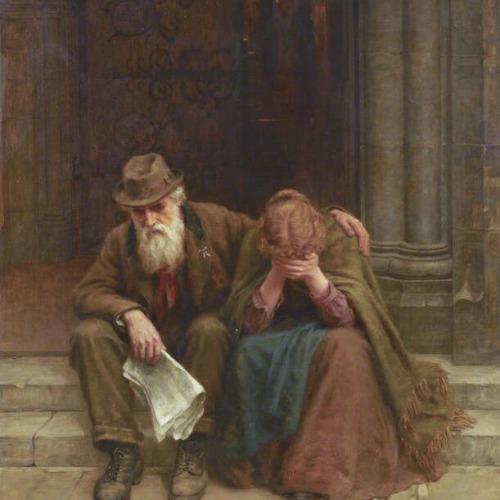
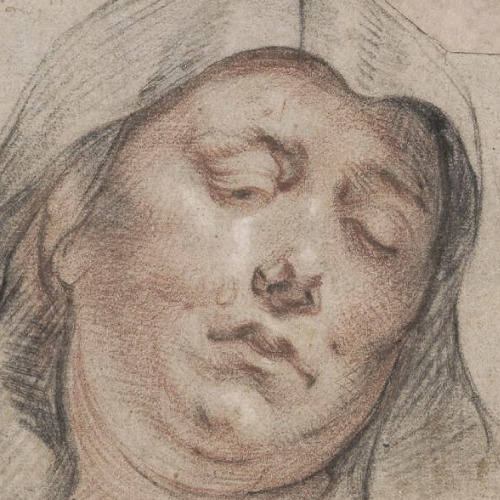

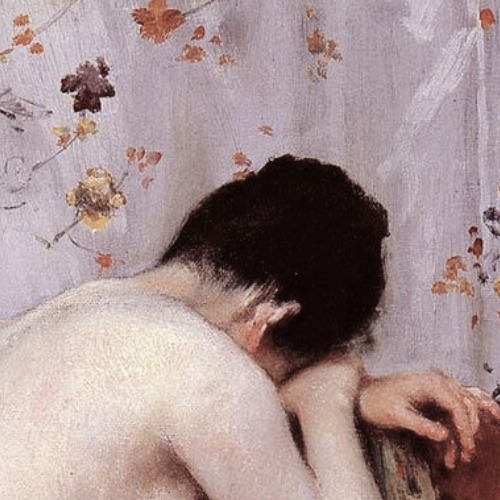


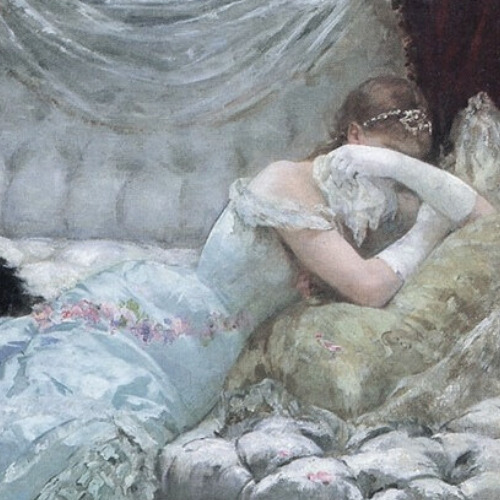

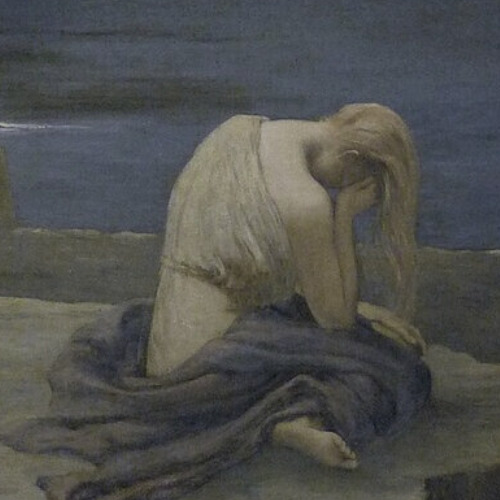

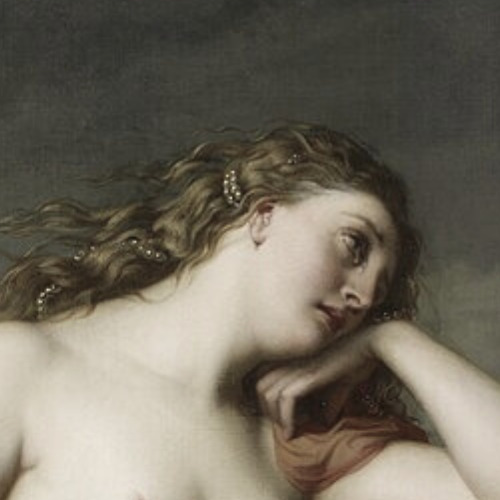
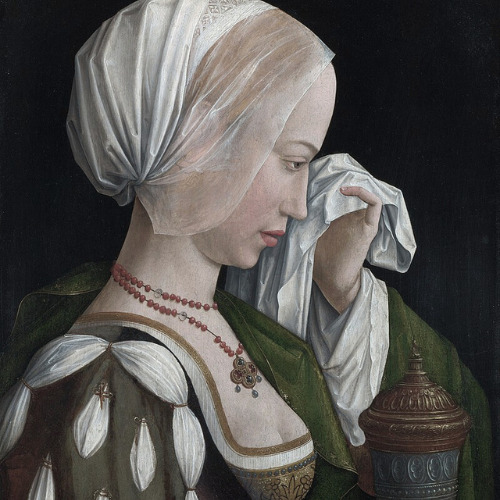
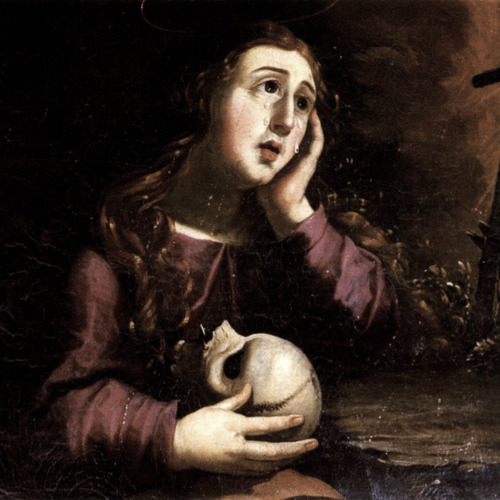
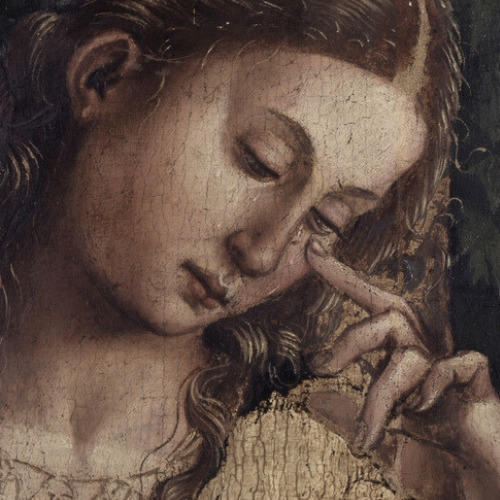
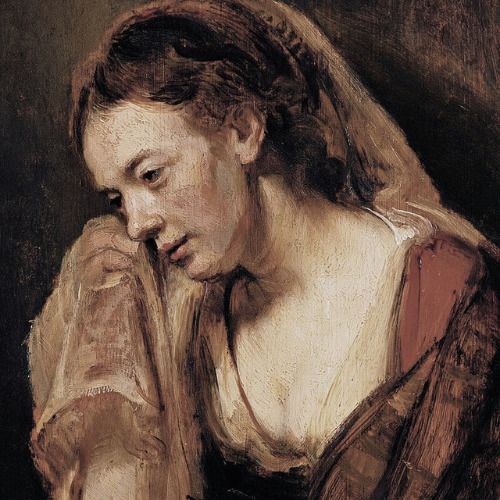

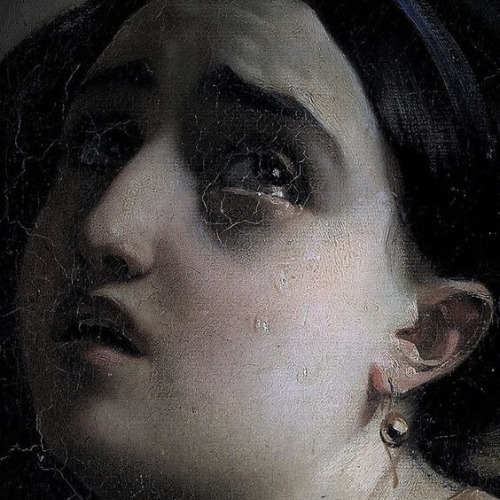
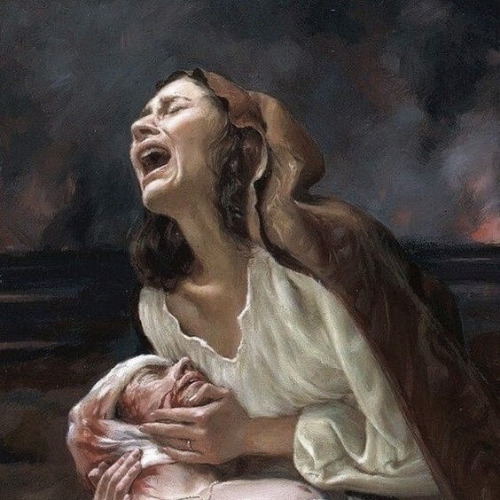

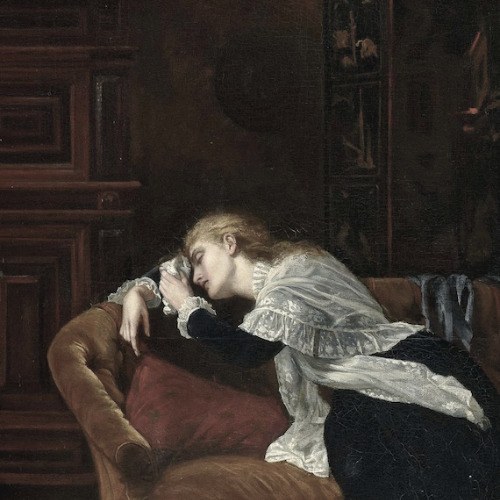

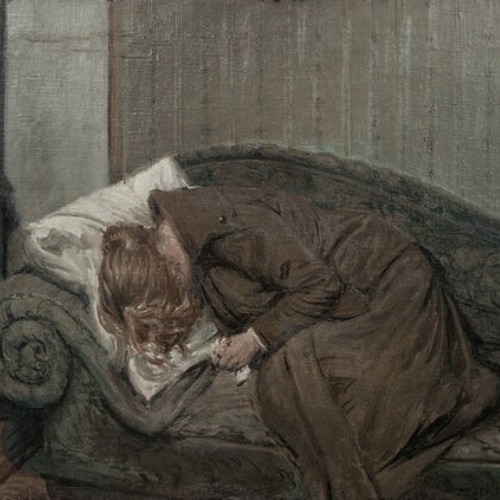
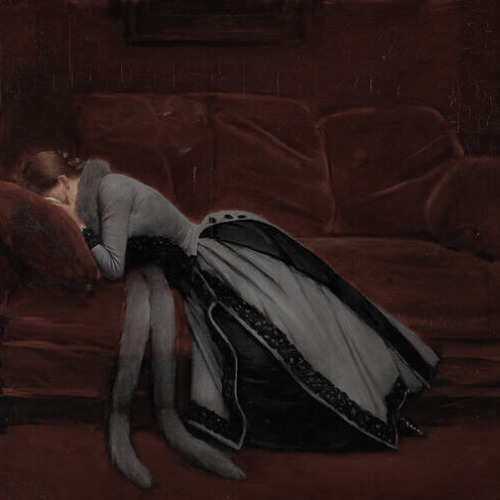
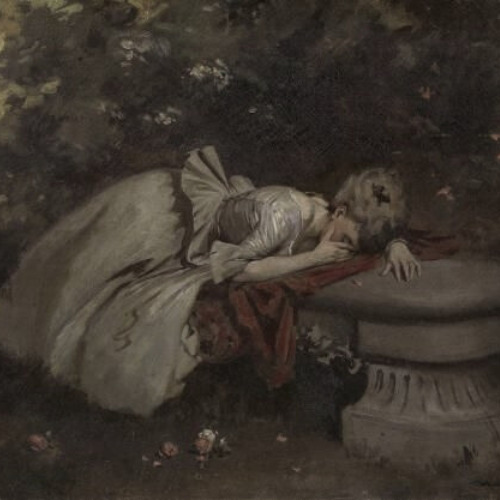

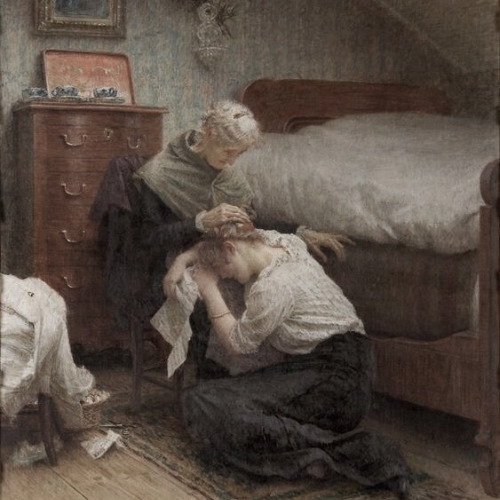

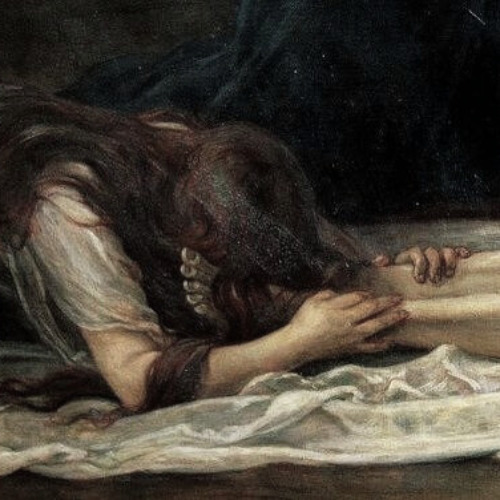

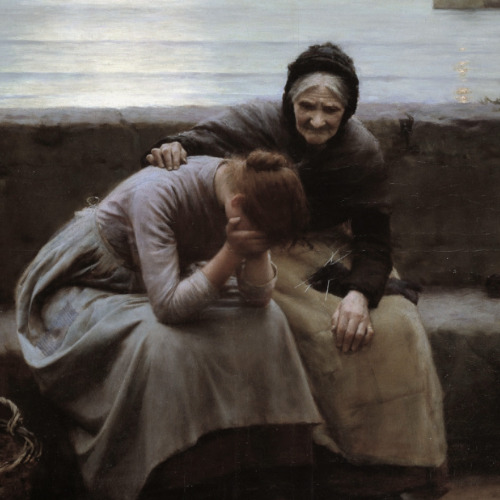
"Crying doesn't mean we're weak, it means we're human"
#artist is louisa starr canizani#artist is jacob jordaens#artist is stanislaw bohusz-siestrzecewicz#artist is chase william merritt#artist is charles cottet#artist is antonio ciseri#artist is henri gervex#artist is simon marmion#artist is henry daras#artist is joseph heintz#artist is henri lehmann#artist is unknown#artist is josefa de obdios#artist is lucas signorelli#artist is rembrandt#artist is john everett millais#artist is karl bryullov#artist is max ginsburg#artist is frederick william elwell#artist is walter william outless#artist is pietro antonio rotari#artist is peder knudsen#artist is jean beraud#artist is heinrich lossow#artist is carl rudolph sohn#artist is vlaho bukovac#artist is antonio piatti-#artist is unknown-#-artist is karl bryullov#artist is walter langley
682 notes
·
View notes
Text
Flowers in her Hair
Flowers were and continue to be a natural and beautiful style choice for women's hair.
The Regency era was a time of intense focus on the heads of women and girls. Hats and bonnets in many styles, headbands or "bandeaux", elaborate hairstyles, and flowers, of course! Flowers alone or as decorative elements to hats and bonnets, as well as various combinations of flowers, headbands, and hair jewelry.

Zacarías González Velázquez (Spanish, ) • Manuela González Velázquez tocando el piano • 1820




Louis-Léopold Boilly (French, 1761-1845) •Portrait of Baroness de Mesgrigny née Berthelot de Rambuteau • Early 1800s
Unknown artist • Portrait of Elizabeth Patterson • Early 1800s
Jean Dubois (1789–1849) • Portrait of Amélie Dubois • 1821
Henri Lehmann (French, 1814-1882) • Faustine Léo • 1842

Unknown artist • Portrait (believed to be Caroline Bonaparte Murat) • c. 1800


Left: François Pascal Simon Gérard • Portrait de jeune femme (Believed to be the Duchesse Marie-Madeleine de Bassano) • c. 1815
Right: Julie Hugo (1797–1865) • Portrait de Zoé Jacqueline Duvidal de Montferrier • 1814
#art#art history#fashion history#painting#portrait#fine art#french artist#regency fashion#regency hair fashion#regency floral hair ornaments#woman artist#julie hugo#louis-léopold boilly#henri lehmann#the resplendent outfit blog#jean dubois#art & fashion history blog#female portraits
98 notes
·
View notes
Text

Picture this: it’s 1837, Paris is buzzing with artists, dreamers, and the faint aroma of fresh baguettes wafting through cobblestone streets. In the midst of this creative whirlwind, a German-born painter named Henri Lehmann puts brush to canvas and conjures up Woman of the "Orient". It’s not just a painting—it’s a portal to another world, a snapshot of Romanticism with a twist of exotic allure. If you haven’t heard of this gem before, buckle up, because I’m about to take you on a little art history adventure that’s equal parts fascinating and fun.
Let’s start with the man himself. Henri Lehmann wasn’t your average painter. Born in 1814 in Kiel, a chilly corner of what was then the Duchy of Holstein, he didn’t exactly grow up surrounded by the glitz of Paris. His dad, Leo, was an artist too, so you could say painting was in his blood. But at 17, young Henri packed his bags and headed to the City of Light to study under the legendary Jean Auguste Dominique Ingres. If that name rings a bell, it’s because Ingres was the guy for neoclassical precision—think crisp lines, flawless forms, and a knack for making every figure look like they just stepped out of a myth. Lehmann soaked it all up, becoming one of Ingres’ star pupils. By 1837, he was ready to make his mark, and Woman of the "Orient" was one of his early flexes.
So, what’s the painting all about? Imagine a woman lounging gracefully, her dark hair cascading in braids, framed by a sheer, golden veil that catches the light just so. She’s draped in a dress that’s a feast for the eyes—white bodice with delicate gold trim, a skirt bursting with aquamarine blues and golden vines that practically dance across the fabric. One knee is raised, her hands resting casually, like she’s got all the time in the world. Behind her, a dreamy horizon fades from misty peach to deep topaz blue, with a strip of pale water shimmering in the distance. It’s signed in the corner: “HEINRICH.LEHMANN 1837 PARIS.” Simple, bold, and dripping with confidence.
But here’s where it gets juicy. The “Orient” wasn’t a real place—at least, not in the way we think of geography today. Back in the 19th century, it was this hazy, romanticized idea of the East—think Middle East, North Africa, maybe a dash of Asia—filtered through the imagination of European artists. It was exotic, mysterious, and a little dangerous, the perfect playground for painters like Lehmann to flex their creativity. Was this woman a real person he met? A muse from his travels? Or just a daydream born from the Parisian obsession with all things “other”? We don’t know for sure, and that’s part of the magic. She’s a story waiting to be told, and Lehmann leaves us to fill in the blanks.
The painting itself is a masterclass in Romanticism meets Neoclassicism. You’ve got the clean, elegant lines of Ingres’ influence—every fold of her dress is deliberate, every curve intentional. But there’s also this lush, emotional vibe that screams Romanticism: the vivid colors, the far-off gaze, the sense that she’s more than just a portrait—she’s a feeling. Lehmann was only 23 when he painted this, which blows my mind. At 23, I was still figuring out how to make ramen without burning the kitchen down, and this guy was out here creating timeless art.
Fast forward a bit, and Lehmann’s career only got wilder. He stuck around Paris, bounced to Rome for a stint (where he painted alongside Ingres and even rubbed elbows with Franz Liszt—yes, that Liszt), and eventually became a big deal. Medals at the Paris Salon, massive murals in places like the Palais de Justice, portraits of everyone from Chopin to Stendhal—he was the real deal. By the time he died in 1882, he’d left behind a legacy that’s still popping up in museums like the National Gallery of Art, where Woman of the "Orient" lives today.
So why should you care about this painting? For one, it’s gorgeous—seriously, Google it and treat your eyes to something special. But more than that, it’s a window into a time when the world felt bigger, stranger, and full of possibilities. It’s a reminder that art isn’t just about what’s on the canvas—it’s about the stories, the vibes, and the questions that linger long after you’ve walked away. Next time you’re scrolling through life, take a second to think about Lehmann’s mystery woman. Who was she? What was she dreaming about? And how did a kid from Kiel end up painting her into immortality?
If you’re ever near the National Gallery of Art, swing by and say hi to her. Tell her I sent you. And if you’ve got your own theories about her story, drop them in the comments—I’m dying to hear what you think!
20 notes
·
View notes
Text

Woman of the Orient
Artist: Henri Lehmann (French, 1814–1882)
Date: 1837
Medium: Oil on canvas
Collection: National Gallery of Art, Washington, DC, United States
#woman#portrait#orient#henri leahmann#19th century painting#french painter#european#orientalism#beauty#painting#genre art#oil on canvas#balcony#sea#curtain#costume#column#fine art#oil painting#artwork#french culture#french art#henri lehmann#national gallery of art
21 notes
·
View notes
Photo










Jacek Malczewski (1854 – 1929) was a Polish Modernist and Symbolist painter.
Malczewski grew up in an impoverished noble family and was initially tutored by his parents.
At the age of 13 he was sent to an uncle's estate. In 1871 he moved to Kraków, where he attended grammar school and was a guest student at the School of Fine Arts, later known as the Kraków Art Academy. Its first director, the famous history painter Jan Matejko, recognized Malczewski's talent and persuaded him to start studying art right away, which he then continued at the École national supérieure des beaux-arts de Paris and with Henri Lehmann.
In 1896 he returned to the Kraków Academy as a professor (until 1900 and again from 1912 to 1921). From 1912 to 1914 he was rector of the university. In 1897 he was one of the founders of the Kraków artists' association Sztuka
https://de.wikipedia.org/wiki/Jacek_Malczewski
9 notes
·
View notes
Text
Marcella Sembrich, one of the greatest singers this country has known, was not only a musician of the most exceptional achievements but a woman whose intelligence, character and charm had direct'y to do with the quality of her art. She was born in a great period of singing—fifteen years after Patti and Nilsson, and ten years later than Lilli Lehmann. Among Sembrich’s associates of the stage were Melba, Nordica, Calvé, Eames, Plancon and the de Reszkes. It was an age of magnificent voices and of bril-liant vocal performance, but it pro-duced no more finished artist than Sembrich. It was characteristic of her that she quickly realized the true eharacter and capacities of her voice, which she never abused. By the greatest industry and conscien-tiousness she developed its re-sources to the utmost and supple-mented them: by her rare accom-plishments as a musician, It is well known that she was trained as a pianist and violinist before she studied song, but her warmest admirers were astonished when she performed at Henry E. Abbey’s benefit after that mana-ger’s disastrous season of 1883-84. The anticipation was of a dilettante exhibition of instrumental preten-sions by a well-meaning prima don-na. But Sembrich played a de Bé-riot violin concerto which the or-chestra joined the audience in rap-turously applauding. She then played a Chopin nocturne, ‘‘proving beyond question,’’ said William J. Henderson in The New York Sun, ‘‘that she was great also as a pian-ist."”’ The audience demanding an aria, she sang the ‘‘Ah, non giunge’”’ from Bellini’s ‘‘Sonnambula’”’ and ended by playing the violin obbli-gato for Christine Nilsson’s singing of the Gounod ‘‘Ave Maria!”’ Range of Voice. The range of Mme. Sembrich’s voice was from the C below the treble clef to the F above it. The voice had been very carefully schooled before she essayed oper-atic appearances. She had a per-fectly tempered scale, with no breaks or inequalities between reg-isters. All the famous colorature roles, with the exception of the very dramatic one of ‘‘Norma,’’ were in her repertory. But the voice, though transparent in tone quality, singu-larly free and flexible, and equal to every test of technic, had also lyrical warmth.
0 notes
Text

Jeremiah Dictating his Prophecies (1842)
Artist: Henri Lehmann
0 notes
Text
Astrological Outlook and Character Analysis for Individuals with a May 16th Birthday
They are extremely grasping, touchy and close to home individuals. High heart and consideration are the principal attributes of these individuals. In any case, they can be severe and corrupt, and notwithstanding their tranquil disposition they battle for power and authority. They have an unwavering confidence in their own power and are persuaded of their capacities; they are not exceptionally held. They need to carry on with a public existence and spread their social movement. Satisfying social obligations gives them delight and fulfillment, however they likewise appreciate harmony and significance, and they are fit for resistance and graciousness. They have numerous companions and colleagues, yet these must be helpful. Business associations with companions will bring them misfortunes. A portion of your concerns are brought about by foes. Monetary issues are not especially great in your childhood. Their material circumstance works on halfway through their lives. They will need congruity in marriage. Astrological Outlook and Character Analysis for Individuals with a May 16th Birthday
On the off chance that your birthday is May 16, your zodiac sign is Taurus May 16 - character and character character: tireless, delicate, genuine, contemptuous, chatty, mean; calling: rancher, spy, turner; colors: red, olive, ruby; stone: red emerald; animal: chameleon; plant: woman's shroud; fortunate numbers: 7,14,40,46,51,52 very fortunate number: 9 Occasions and observances - May 16 Global Day of Living respectively in Harmony In Costa Rica it is the Public Day of the Microbiologist and Clinical Physicist. Global Day of Light May 16 Superstar Birthday. Who was conceived that very day as you? 1900: Juan Fდ©lix Sდ¡nchez, Venezuelan craftsman (f. 1997). 1905: Henry Fonda, American entertainer (d. 1982). 1906: Arturo Uslar Pietri, Venezuelan author, columnist and legislator (f. 2001). 1907: Antonდn Puე?, Czechoslovak footballer (d. 1988). 1909: Ubaldo Martდnez, Uruguayan entertainer (d. 1977). 1909: Margaret Sullavan, American entertainer (d. 1960). 1910: Olga Bergholz, Russian artist (d. 1975). 1912: Studs Terkel, American author (d. 2008). 1913: Woody Herman, American performer (d. 1987). 1913: Juan Suდ¡rez Martდnez, Spanish money manager (f. 2006). 1914: Edward T. Lobby, American anthropologist (d. 2009). 1915: Mario Monicelli, Italian movie producer (d. 2010). 1916: Adriana Caselotti, American entertainer (f. 1997). 1916: Ephraim Katzir, Israeli legislator (d. 2009). 1917: Juan Rulfo, Mexican author (d. 1986). 1917: George Gaynes, American entertainer. 1919: Liberace (Wladziu Valentino Liberace), American piano player (d. 1987). 1919: Ramდ³n Margalef, Spanish biologist (f. 2004). 1920: Martine Song, French entertainer (d. 1967). 1921: Harry Carey Jr., American entertainer (d. 2012). 1922: Eddie Bert, American trombonist (d. 2012). 1923: Merton Mill operator, American business analyst, Nobel laureate in financial aspects in 1990 (f. 2000). 1924: Dawda Jawara, Gambian legislator, first president. 1925: Bobbejaan Schoepen, Belgian performer (d. 2010). 1925: Ola Vincent, Nigerian financial specialist (d. 2012). 1925: Nancy Roman, American stargazer. 1927: Nდlton Santos, Brazilian soccer player. 1928: Alfred Manuel Billy Martin, American baseball player (d. 1989). 1929: Adrienne Rich, American artist and women's activist (d. 2012). 1930: Betty Carter, American jazz vocalist (d. 1998). 1930: Friedrich Gulda, Austrian piano player and author (d. 2000). 1930: Alberto Terry, Peruvian soccer player (d. 2006). 1931: Vujadin Boვ¡kov, Serbian footballer and mentor (d. 2014). 1936: Francisco Sდ¡nchez Martდnez, Spanish astrophysicist. 1936: Karl Lehmann, German cardinal. 1937: Antonio Rattდn, Argentine soccer player, mentor and legislator. 1937: Yvonne Craig, American entertainer. 1941: Carlos Perciavalle, Uruguayan entertainer, comedian, maker and guide. 1943: Marcelino Vergara, Spanish player (d. 2010). 1944: Danny Trejo, American entertainer of Mexican beginning. 1944: Juan Villarzდº, Chilean financial specialist and lawmaker. 1944: Billy Cobham, Panamanian jazz drummer. 1945: Carlos Osoro, Spanish diocesan. 1945: Martha Beatriz Roque, Cuban financial specialist. 1946: Robert Fripp, English performer, of the band Ruler Ruby. 1948: Jesper Christensen, Danish entertainer. 1950: J. Georg Bednorz, German physicist, 1987 Nobel Prize champ in Material science. 1950: Rubდ©n Alberto Gდ³mez, Argentine crook and military torturer. 1951: Christian Lacroix, French high fashion creator. 1953: Puncture Brosnan, Irish entertainer. 1953: Luis Javier Argდ¼ello Garcდa, Spanish minister. 1954: Ana Laguna, Spanish artist. 1955: Caridad Canelდ³n, Venezuelan entertainer and vocalist. 1955: Olga Kდ³rbut, Belarusian acrobat. 1955: Debra Winger, American entertainer. 1957: Joan Benoit, American competitor. 1957: Antonio Maceda, Spanish footballer. 1959: Cynthia del დ?guila, Guatemalan instructor and legislator. 1959: Roberto Piazza, Argentine originator. 1959: Female horse Winningham, American entertainer. 1961: Solveig Dommartin, French-German entertainer. 1961: Jeannette Rodrდguez, Venezuelan entertainer. 1961: Charles Wright, American grappler. 1962: Nuria Gonzდ¡lez, Spanish entertainer. 1962: Roberto Iniesta, Spanish vocalist, of the Extremoduro band. 1963: Mercedes Echerer, Austrian entertainer and lawmaker. 1964: Boyd Tinsley, American violin player, of the Dave Matthews Band. 1964: John Salley, American b-ball player. 1965: Krist Novoselic, American performer, of the band Nirvana. 1966: Janet Jackson, American vocalist. 1966: Thurman Thomas, American football player. 1969: David Boreanaz, American entertainer. 1969: Tracey Gold, American entertainer. 1969: Steve Lewis, American competitor. 1970: Gabriela Sabatini, Argentine tennis player. 1971: Josდ© Oscar Flores, Argentine footballer and mentor. 1972: Khary Payton, American entertainer. 1973: Jason Acuna, American entertainer. 1973: custom curriculum, American rapper. 1973: Tatiana of Liechtenstein, Princess of Liechtenstein. 1973: Tori Spelling, American entertainer. 1974: Laura Pausini, Italian vocalist. 1974: Sonny Sandoval, American vocalist, of the band Payable On Death. 1975: Tony Kakko, Finnish performer, of the band Sonata Arctica. 1975: Khalid al-Mihdhar, Saudi psychological militant who took part in 9/11 (d. 2001). 1977: Dolcenera, Italian artist. 1977: Zatu, rapper, Spanish. 1977: Randy Ebright, American drummer. 1977: Melanie Lynskey, New Zealand entertainer. 1977: Emiliana Torrini, Icelandic artist lyricist. 1978: Lionel Scaloni, Argentine footballer. 1978: Ernesto Sevilla, Spanish entertainer and moderator. 1978: Jim Sturgess, English entertainer. 1979: McKenzie Lee, English pornography entertainer. 1979: Sergio Roitman, Argentine tennis player. 1980: Mikel Alonso, Spanish footballer. 1980: Juan Arango, Venezuelan soccer player. 1981: Joseph Morgan, English entertainer. 1981: Ricardo Costa, Portuguese soccer player. 1982: Billy Crawford, American entertainer and performer. 1982: Joo Ji Hoon, South Korean entertainer and model. 1982: ვ?ukasz Kubot, Clean tennis player. 1983: Nancy Ajram, Lebanese model, essayist and artist. 1984: Darდo Cvitanich, Argentine soccer player. 1985: Stanislav Ianevski, Bulgarian entertainer. 1985: Tadayoshi Okura, entertainer, artist, model, drummer and Japanese icon. 1986: Megan Fox, American entertainer. 1986: Andy Keogh, Irish footballer. 1988: Jesდºs Castillo, Mexican soccer player. 1988: Abella Anderson, American explicit entertainer. 1989: დ?lvaro Domდnguez, Spanish footballer. 1989: Behati Prinsloo, model Namibia. 1990: Thomas Brodie-Sangster, English entertainer. 1991: Grigor Dimitrov, Bulgarian tennis player. 1993: IU, South Korean artist, musician and entertainer. 1994: Bryan Rabello, Chilean soccer player. 1995: Nicole Durazo, Mexican entertainer. 1998: Ariel Waller, Canadian entertainer. 2001: Carlota Boza, Spanish entertainer.
0 notes
Text

15 Works, Today, April 14th is artist Henri Lehmann's day, his story, illustrated with footnotes #103
Henri Lehmann (14 April 1814 – 30 March 1882) was a German-born French historical painter and portraitist.
Born Heinrich Salem Lehmann in Kiel, in the Duchy of Holstein, he received his first art tuition from his father Leo Lehmann and from other painters in Hamburg. In 1831, at the age of 17, he travelled to Paris to study art under Jean Auguste Dominique Ingres…
Please follow link for full post
Art,Zaidan,Paintings,fine art,Henri Lehmann,biography,History,fineart,Artists,footnotes,
Zaidan #biography #Art #Paintings #Artists #History #footnotes #fineart
0 notes
Text
• Mary Magdalene in the Cave, Hugues Merle, 1868 • Young Mother Fleeing with a Child in her Arms, Artist Unknown, c. 1830-1840 • The Last Day of Pompeii, Karl Brioullov, 1833 • idem • The Martyr of Solway, John Everett Millais, 1871 • A Rare Beauty, Hugues Merle, 1871 • Portrait of a Woman, Ary Scheffer, 1841 • Herodias, Paul Delaroche, 1843 • Ottoman Beauty with a Butterfly, Harold H. Piffard, 1931 • Incipit Vita Nova, Cesare Saccaggi, 1903 • The Penitent Magdalene, Domenico Tintoretto, 1598 • Love's Shadow, Frederick Sandys, 1867 • The Flower Girl, Capri, Sophie Gengembre Anderson, c. 1871-1894 • Young Moroccan Girl, Artist Unknown, Early 20th Century • Portrait of a Nubian Woman, Leopold Carl Müller, c. 1873-1884 • Girl with a Book, Pietro Antonio Rotari, c. 1756 • Saint Apollonia, Carlo Dolci, c. 1670 • Judith Beheading Holofernes, Caravaggio, c. 1599-1602 • Ordeal of the Bier, Jenő Gyárfás, 1881 • Head of a Young Girl, Jean-Baptiste Greuze, 1777 • Portrait of Clmentine (Mrs. Alphonse) Karr, Henri Lehmann, 1845
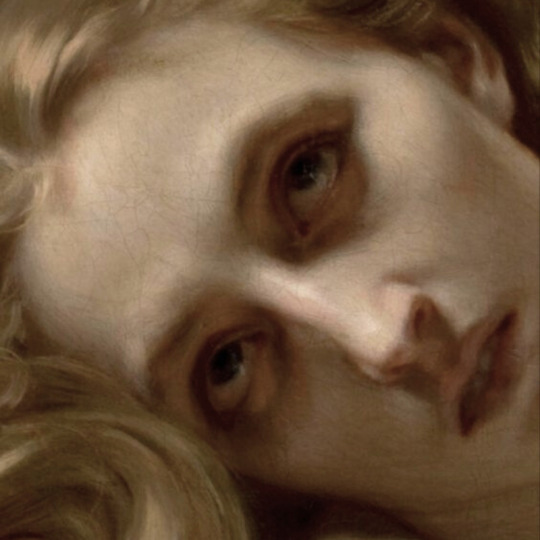
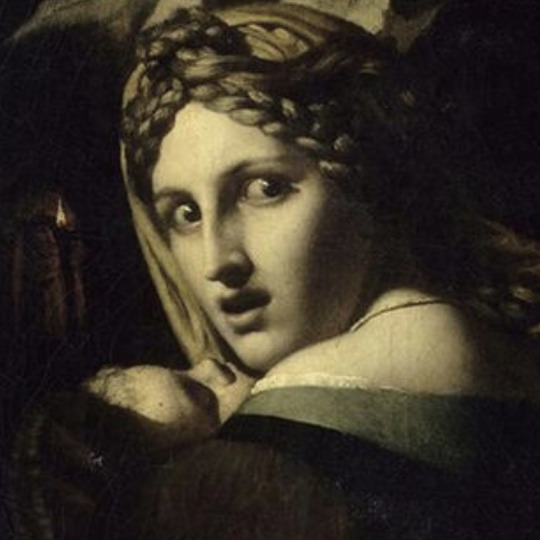
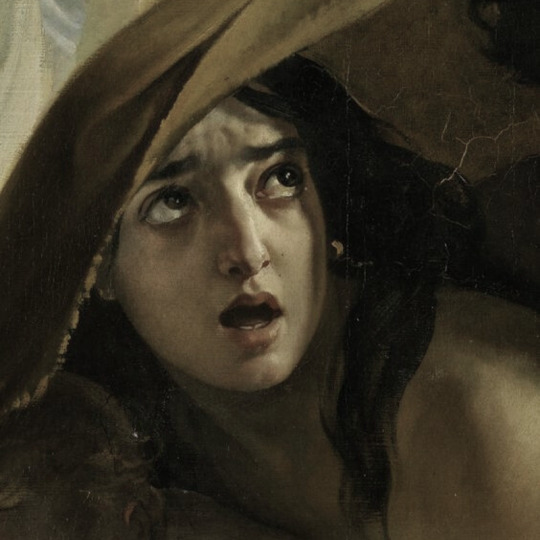
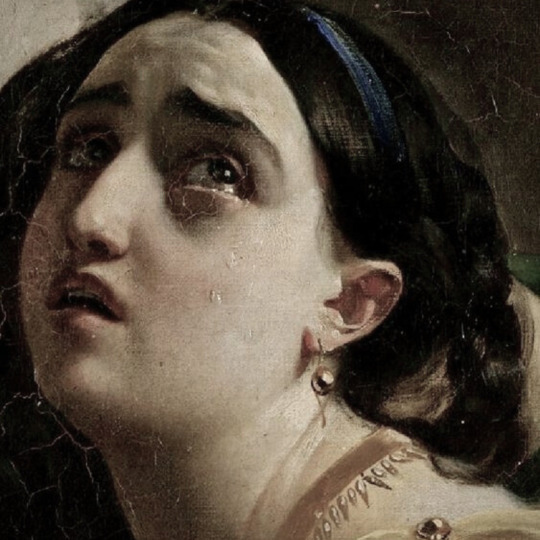
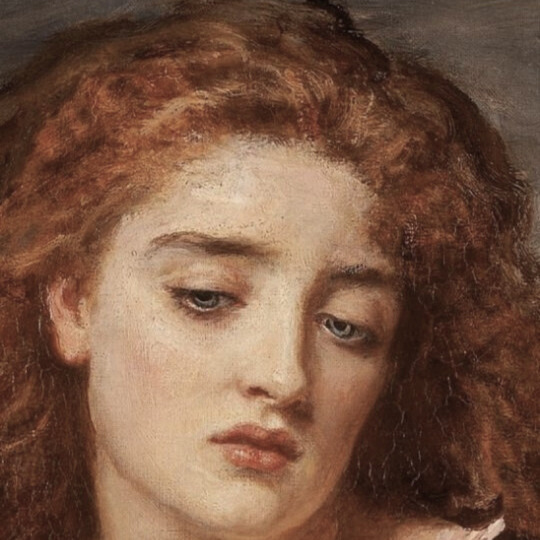
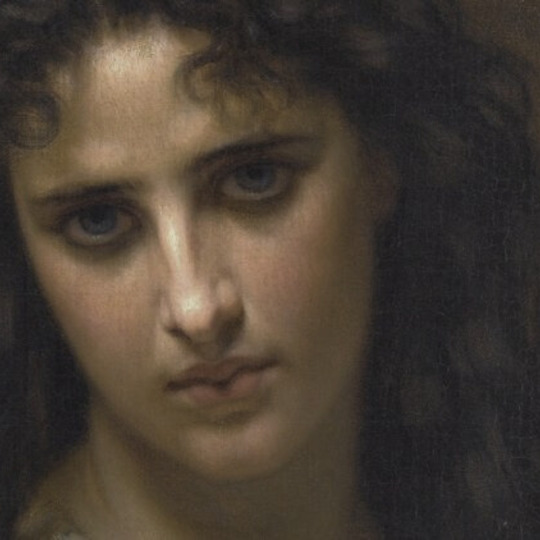


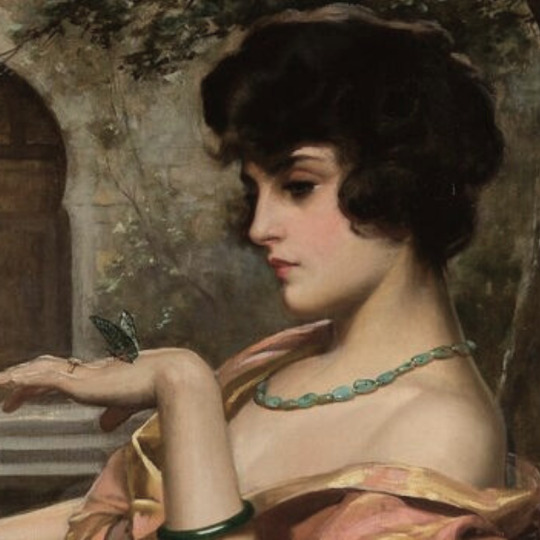

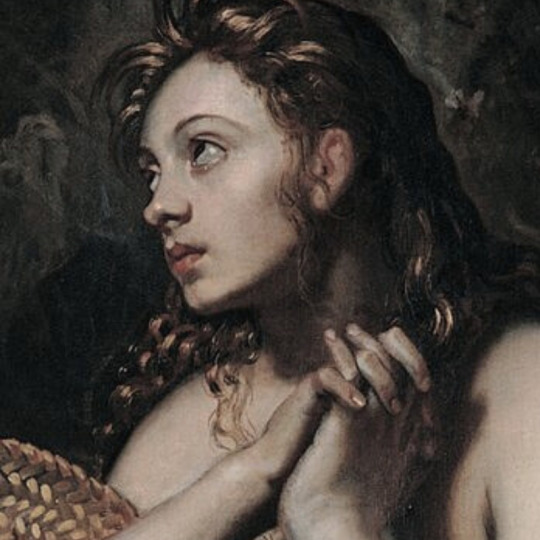

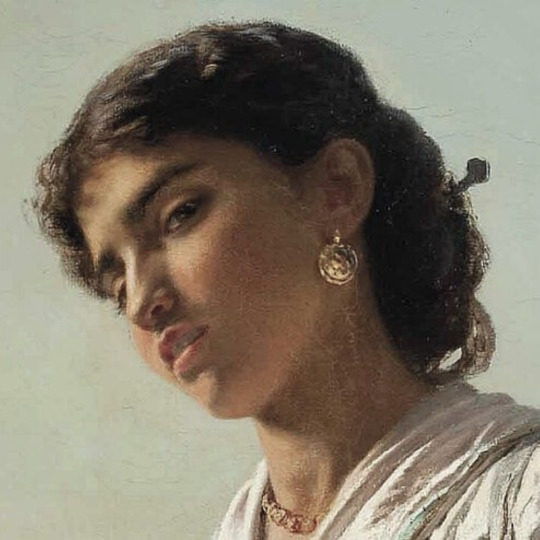

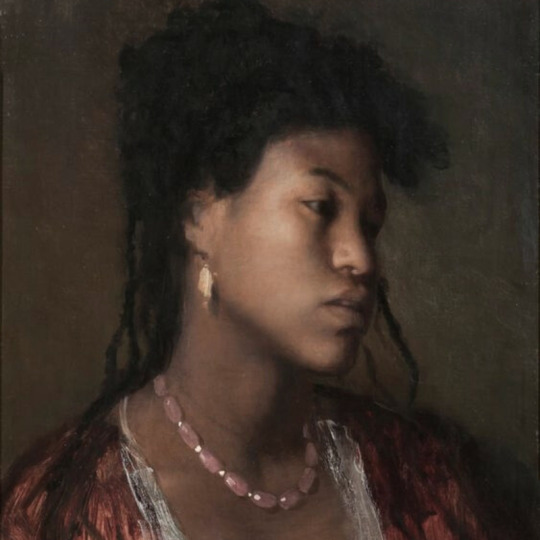
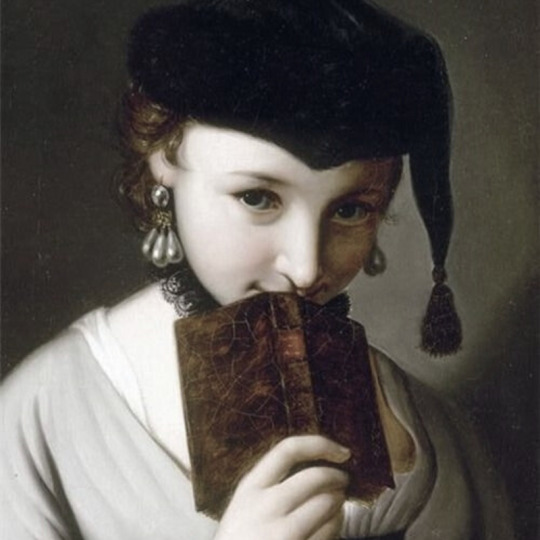
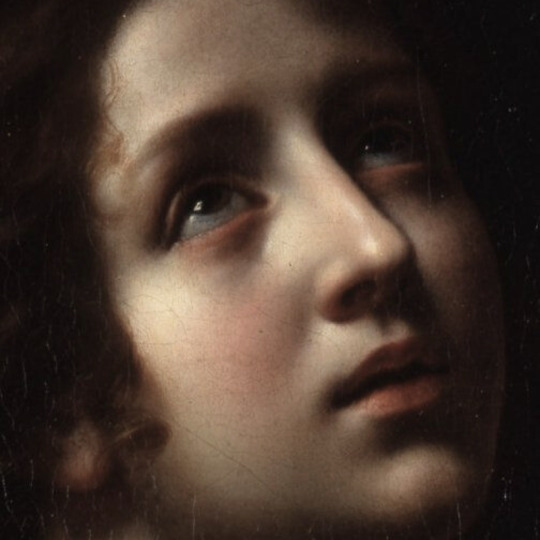
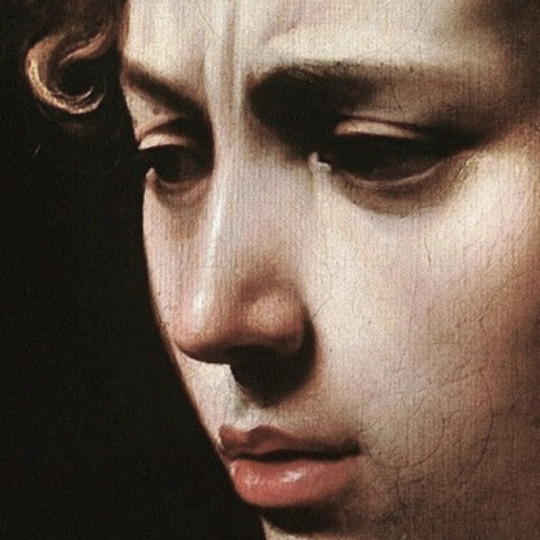
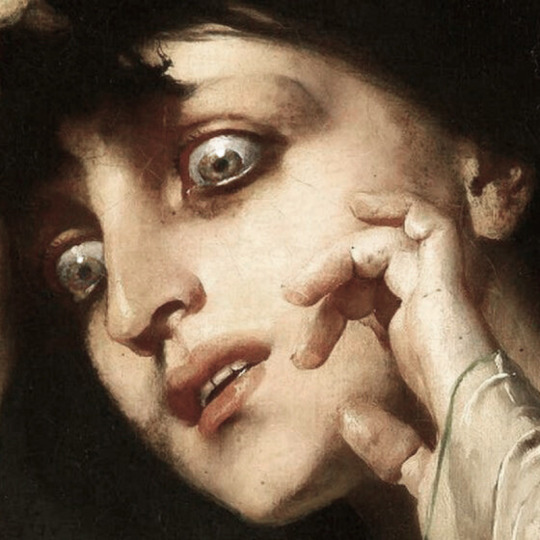

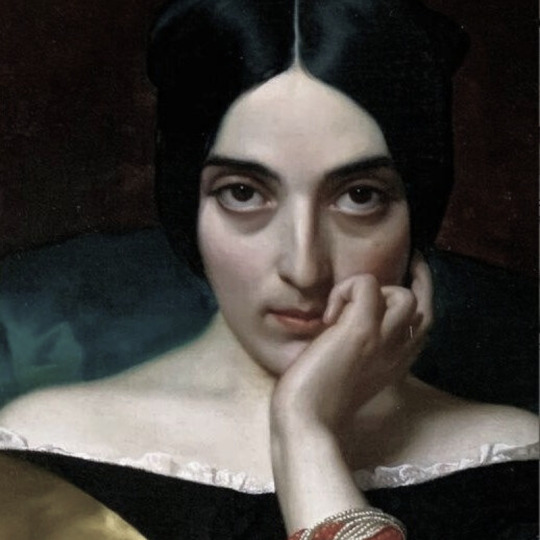
it's all in the eyes
5K notes
·
View notes
Photo

Ophelia by Henri Lehmann (1847)
#henri lehmann#art#paintings#fine art#19th century#19th century art#neoclassical#neoclassical art#neoclassicism#painting#german art#german artist#shakespeare#shakespeare art#hamlet#ophelia#classic art
3K notes
·
View notes
Text

Ophelia
Henri Lehmann
oil on canvas, 1847
221 notes
·
View notes
Photo

Voglio Bene and her piece 'Clémentine' that is inspired by Henri Lehmann's painting from 1845. Bénédicte transforms traditional portraits into tattooed icons, an intriguing juxtaposition of past and present. The artist shares a letter to the character 'Clémentine' in the caption: "You've been around me for a while, and last night we finally met I don't know much about you, but I'll try to find a bit of your story because you remain very mysterious…." We are excited to follow Bénédicte on her exploration!
---
#beautifulbizarre #vogliobenedicte #vogliobene #painting #tattoo #inspiration #henrilehmann #contemporaryart #contemporaryart #instaartist #visualart #newcontemporary
110 notes
·
View notes
Photo










Waves by Florian Roithmayr
Elasticity, Fracture & Flow by Rowena Hughes
click here to purchase either book
• ~ ~ ~ •
Each artist takes a different approach to using existing printed matter to create new books. Florian Roithmayr’s Waves is a complex collage of segments compiled to reveal connections between disparate source materials. The structure of the book embodies the nature of waves themselves, repetitively dazzling and disorientating the reader. Whereas Rowena Hughes’s Elasticity, Fracture & Flow is a form of palimpsest, superimposing extracts from a scientific text to write a form of concrete poetry. Each phrase is extracted from the text on the page directly beneath, attempting to unearth the affective or aesthetic content from a supposedly objective scientific text — within even the driest most technical texts there are phrases that evoke visual, emotional or sensual experiences.
Florian Roithmayr’s book Waves is the first of a series of books tracing natural phenomena. It is a compendium bringing together texts from over two hundred writers. As in comparative literature, different voices and descriptions accumulate to form their own new narrative across science writing and literature, telling the story of how waves are imagined across different contexts and how they resonate as energy, metaphor, image or feeling.
Rowena Hughes's book was chosen for its title – Elasticity, Fracture & Flow – referring to properties of matter, qualities of language as well as states of mind. It has a motif of a twisted loop recurring in many permutations and layered with elements of drawing, a process moving backwards and forwards between the digital and analogue using an interplay of intention and chance, a creative freedom within constraints.
She has been making artist’s books for a number of years, finding old physics textbooks, removing each page and then printing or drawing on to each page before rebinding them in the original cover. This is the first time she has reproduced one of these unique books as a small edition.
• ~ ~ ~ •
Waves by Florian Roithmayr Softcover, b/w, 128pp 120 x 165 mm Printed in an edition of 150 €15
Elasticity, Fracture & Flow by Rowena Hughes Cloth-bound, hardcover, full colour, 168pp 140 x 204 mm Printed in an edition of 150 €30
• ~ ~ ~ •
Florian Roithmayr developed his book Waves at Daedalus Street in Athens during a research residency in 2020 supported by Arts Council England. He is currently Senior Research Fellow at the Henry Moore Institute in Leeds and Associate Professor of Art at the University of Reading. Exhibitions of his work include solo presentations at Camden Arts Centre, Bloomberg space and Kettle’s Yard. His book, Aftercast, was published by Tenderbooks, London (2018), designed by Sara De Bondt Studios.
Rowena Hughes’s book works have been exhibited at Belmacz, the ICA, IMT, BreeseLittle galleries in London, Gebruder Lehmann Berlin, Arch Athens and Fotogalerie Vienna amongst others. Her sculptural work is currently on view as part of inaspettatamente (Unexpectedly) at Cloud Seven in Brussels, works from the Frédéric de Goldschmidt’s collection curated by the ghost of Alighiero Boetti.
A joint book launch and reading by Florian Roithmayr and Sophy Downes was hosted by Radio Athènes on Friday 17th December 2021
Sophy Downes is a classical archaeologist, who specialises in Achaemenid Persia. She grew up in Cambridge and now lives in Rome, where she teaches archaeology by day, writes by night, and stalks the Romantic poets whenever possible. She studied at the University of Esfahan and held a fellowship at the British Institute of Persian Studies in Tehran. Her writing has appeared in The Ekphrastic Review, Timeless Travels and Broken Sleep Books.
.
2 notes
·
View notes
Photo
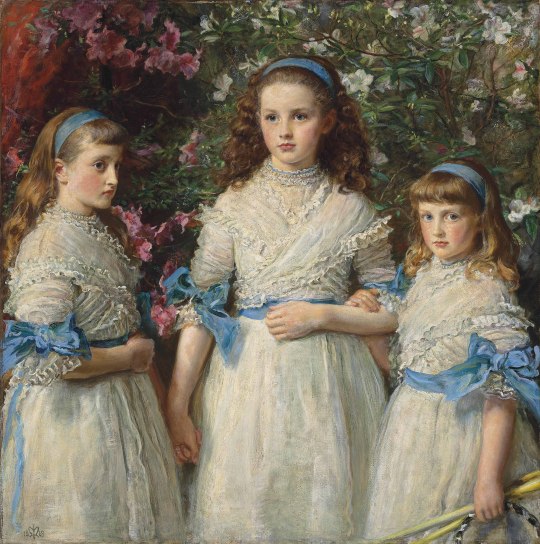
Sisters by Sir John Everett Millais, 1868
John Everett Millais's portrait of Lady Campbell (1861-1933) was one of three pictures Millais exhibited in 1884 at the Grosvenor Gallery, along with his portrait of the Marquess of Lorne, Queen Victoria's son-in-law (National Gallery, Ottawa), and Millais's image of Lady Campbell when she was a child, from fifteen years earlier (1868-9, fig. 1). It was characteristic of Millais to exhibit society portraits or images of politicians at the Grosvenor, where many of his patrons were frequent visitors. By contrast, in the same year he showed three portraits and an historical picture, An Idyll, 1745 (Lady Lever Art Gallery, Port Sunlight) at the Royal Academy of Arts, and three fancy pictures, Little Miss Muffet (private collection), A Message from the Sea (private collection), and The Mistletoe-Gatherer (private collection, on loan to the National Gallery of South Africa, Capetown) at Thomas McLean's more populist gallery on the Haymarket. Of these nine new pictures, Lady Campbell was the most impressive offering of the year. Millais posed her in a fashionable cap-sleeved white evening dress, with its narrow shoulders and wide bust and a small bouquet of forget-me-nots fastened in front, and a triple-strand pearl necklace, and seated on an oak chest alongside her gloves and a blue Nankin vase filled with tulips. She holds a fan, and looks off to her right. Behind her is a loosely painted yellow floriated tapestry. Nina Lehmann's father commissioned this portrait, as he had the one of her as a child, and in some ways they complement each other. The red camellia held in the lap has been changed to a lady's fan, and the overlarge earthenware pot that the young Nina sits upon, with its drips of glazing along the bottom, has been replaced by a more elegant, refined, and smaller in scale to the sitter, Chinese Porcelain vessel. The work was painted in the month leading up to Nina Lehmann's marriage, to Guy Theophilus Campbell, 3rd Bt, of Thames Ditton, born in 1854 and who served in the Afghan War of 1878-80. They married on 30 April 1884, just before the Grosvenor opened in the first week of May, and less than two years after he had succeeded as Baronet. They would have four boys and two girls. He died 12 September 1931, and she in 1933. Millais's painting of Nina when she was a young girl (fig. 1) was titled Nina, daughter of Frederick Lehman, Esq., and he exhibited it at the Royal Academy in 1869. In that earlier picture, he employed a predominantly white tone and relaxed atmosphere as pursued in many of his images of young girls-such as Spring (1856-9, Lady Lever Art Gallery, Port Sunlight) and Sisters (1868, lot 8). The picture was calculated to appeal to clients with evolved tastes. The sitter's father, Frederick Lehmann (1826-91) was a businessman, violinist, and musical aficionado whose wife, born Jane Gibson Chambers but known as Nina (b. 1830), was a pianist. She was the daughter of the publisher Robert Chambers, founder of the Edinburgh Journal. Lehmann made his fortune dealing arms in the American Civil War. One of his brothers was Henri Lehmann (1814-82), a pupil of J.A.D. Ingres, and the other was Millais's friend, Rudolf Lehmann (1819-1905), also a painter, who lived at Worth Villas, Campden Hill, and who married Jane Chambers's sister Amelia. The Lehmanns were close to Millais's friends such as the novelist Wilkie Collins, musicians including the violinist Joseph Joachim, the conductor and pianist Charles Hall, and other members of English musical society. The Lehmanns held frequent musical evenings for London's artistic society in their house at 15, Berkeley Square. In addition, Lehmann's sister Eliza, married Ernst Benzon, and the Benzons would also become patrons of Millais. It was through society connections that Millais gained the first commission to paint Lehmann's daughter, and then to paint her again to celebrate her marriage. Millais was working on the portrait in early April, when he wrote to his daughter Mary, 'I have finished my pictures for the RA and they have been sent away this morning so I feel a load taken off my back. Your Uncle William was here yesterday and showed the public my works. I believe some hundreds came, but I went out to avoid the Crowd. I have one day's holiday tomorrow and then I have Nina Lehmann sitting to me, as her Father is very anxious for her portrait to go to the Grosvenor gallery. All the pictures are very much liked and I shall set about doing the other Commissions from Mr. Wertheimer'. (John Everett Millais to Mary Millais, at 31, Devonshire Terrace, W.impole Street, from Palace Gate, dated 7 April 1884, Pierpont Morgan Library, Millais Papers MA.1485). The opulence of this portrait, and the interest in fashion and elegant environs was a later and more modern manifestation of the Georgian revival that Millais had spearheaded in the 1860s with portraits such as Sisters (1868, lot 8). Here, Millais worked in a mode that reflected concerns in contemporary continental art, where artists like Pierre Auguste-Renoir collaborated with sitters such as Madame Georges Charpentier, posed in 1878 with her two children in her apartment and surrounded by a litany of forms associated with the pan-European Aesthetic Movement. Such paintings represented cultivated tastes in clothing and accoutrements (often Asian in style), and also bore elegant and evocative brushwork free from the detailed description of Millais's earlier Pre-Raphaelite style. As Claude Phillips wrote in The Academy of the Grosvenor Gallery display of 1884, 'It was a somewhat bold venture on the part of Mr. Millais to have placed in juxtaposition his superb and well-remembered portrait of 'Miss Nina Lehmann' (57), painted in 1869, and his new portrait of the same lady - now Lady Campbell - (62). The former is one of his most complete and admirable works, and is one to which Englishmen are glad to point as an example of perfect technique from the hand of one of their painters. The new portrait, though in it the master-hand is still visible, and there is much to admire - especially the elegant pose and treatment of the head - does not support comparison with the earlier one either as regards the painting of the flesh, the complete and harmonious rendering of the surroundings, or general charm and accomplishment'.
Yet in the same year the critic Henry Blackburn called Millais 'the greatest living portrait-painter,' and Phillips's opinion resonated more in the 1880s, when Millais's more finished child images, whether portraits or fancy pictures, were routinely and favourably compared to the Georgian era works of Sir Joshua Reynolds and Thomas Gainsborough, than today. Now, it is Millais's more freely painted and suggestive portraits of women such as Hearts are Trumps (1872, Tate), Louise Jopling (1879, National Portrait Gallery), and Kate Perugini (1880, private collection) that seem his most advanced works, and reveal him to be one of the finest portraitists of the period, and the painter who laid the groundwork for John Singer Sargent and Giovanni Boldini and the next generation of European portraitists.
17 notes
·
View notes
Text

Étude pour Aurore (ou «Le Matin») (Study for Aurora (or Le Matin)) ~ oil on panel ~ Henri Lehmann (French artist, 1814-1882)
75 notes
·
View notes